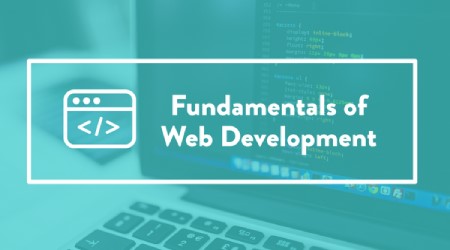
Web development has been constantly evolving from the early 90s and web pages were once a compendium of sober text fields. Today, the expensive presentation of multimedia content has a privileged place.

Information platforms have become means of entertainment. In these platforms, users prefer interactive web pages that have an attractive design and that can be operated intuitively.
Web developers have different tools that facilitate integrating dynamic content and creating web pages tailored to users.
Table of Contents
Technical Foundations Of A Web Page
One of the main requirements to create a web page is to have storage capacity on a server, a service offered by specialized Internet providers (web hosting providers).
In general, the offer includes complete packs that, in addition to the necessary disk space, also include features such as RAM, an own domain, databases, and the relevant tools for web development. You can also use bootstrap templates that might help you to create technical foundation to build a responsive and creative web designs
In general, knowledge of the physical devices that host the resources is an aspect that remains hidden for the users of the web hosting packages.
In case of alternative hosting models such as dedicated web servers, the opposite is true, as these are rented in a data center as separate hardware components.
Domain
Any project on the Internet has a unique and unambiguous name. The so-called domain is one of the basic components of web hosting packages.
Domains strictly follow the hierarchical structure of the domain name system and consist of top-level domains, free domains (second level domains), and optional sub-domains.
The domain name registration is done through an Internet provider that forwards the request to the competent authority. Domain choices are available, from short and concise formulations to common top-level domains.
Web Space
Each web page contains data that the web server makes available to users. For this reason, web hosting packs always have a certain storage quota for HTML documents, style sheets, images, videos or databases.
The data transfer is generally executed through the File Transfer Protocol (FTP) and a client program such as Filezilla or the WinSCP application.
When choosing a web hosting pack, it must be taken into account that the webspace can be expanded if necessary.
Database
If web pages are not made available statically on the server, but are generated based on the needs that arise with each visit, web developers resort in most cases to relational databases.
With this type of data management, these will be structured through tables and a relationship with other data will be established through identifiers, And in certain scenarios, temporary databases can be used.
The transmission and management of data structures is generally done through the language for SQL databases (Structured Query Language). On the other hand, MySQL, open source software, is one of the relational databases worldwide for dynamic web pages.
Web Server
The web hosting packs for beginners are carried out through the so-called shared hosting. With this type of hosting, there are several hosting accounts that can share the resources of the same server.
For large-scale professional projects, web hosting providers offer different web server capabilities that exclusively provide customers with hardware components. In addition to renting, large companies are recommended to purchase their own equipment.
Basic Tools For Web Programming
If a web hosting pack or a server is the basis of a web project, then users have various possibilities to create their own web page.
It ranges from intuitive web page software with limited design options through flexible content management systems (CMS) to self-made source code.
While modular systems for the main pages that are guided by the WYSIWYG principle (“What You See is What You Get”) are intended, in principle, for beginners who lack computer knowledge. The operation of content management systems requires certain prior knowledge.
However, web developers can enjoy a high degree of flexibility if they are programming their project themselves as an editor, which requires basic knowledge of programming languages such as HTML, CSS, JavaScript, and PHP.
HTML
In the field of web development, the HTML (Hypertext Markup Language) is used for the semantic structuring of digital content through so-called tags.
In this way, elements such as text fragments, headings, graphics or hyperlinks can be defined. Such source code is the foundation of every web page. For its part, a static and simple web page is nothing more than a selection of interconnected HTML documents.
HTML5 expands the options for audio and video elements. Instead, the visual representation of the content will be defined with the cascading style sheet language or CSS.
CSS
Cascading Style Sheets or CSS are understood as a language to format HTML documents in a standard way. Web developers use CSS to assign rules to elements defined in HTML code for rendering on the server.
The current CSS3 specification includes instructions on design, colors and typography, as well as animations, color transitions and shadows.
JavaScript
Modern web pages interact with their users through the integration of interactive boxes, drop-down menus, or slides. You can also contact SEO services in Abu Dhabi for more guidance on the best programming language selection.
JavaScript comes into action if the dynamic content of this nature is integrated into HTML pages and this means taking a step beyond HTML and CSS. Since it allows the interactions of users to be evaluated and the content of the pages, websites are reloaded, updated, or modified.
PHP
Static web pages are available on the webserver and dynamic web pages are generated, upon request, through the webserver. However, programming languages such as PHP make it possible.
The programming with PHP is interpreted by the server and, instead of the source code of the dynamic web pages being delivered directly to the said server, it transmits the data to a PHP interpreter.
This interpreter generates the requested web page, often based on the data deposited in the databases, and returns it to the webserver, from where the interpreter’s edition will be sent to the server.
Perl or Python are other programming languages used for the development of dynamic web pages.